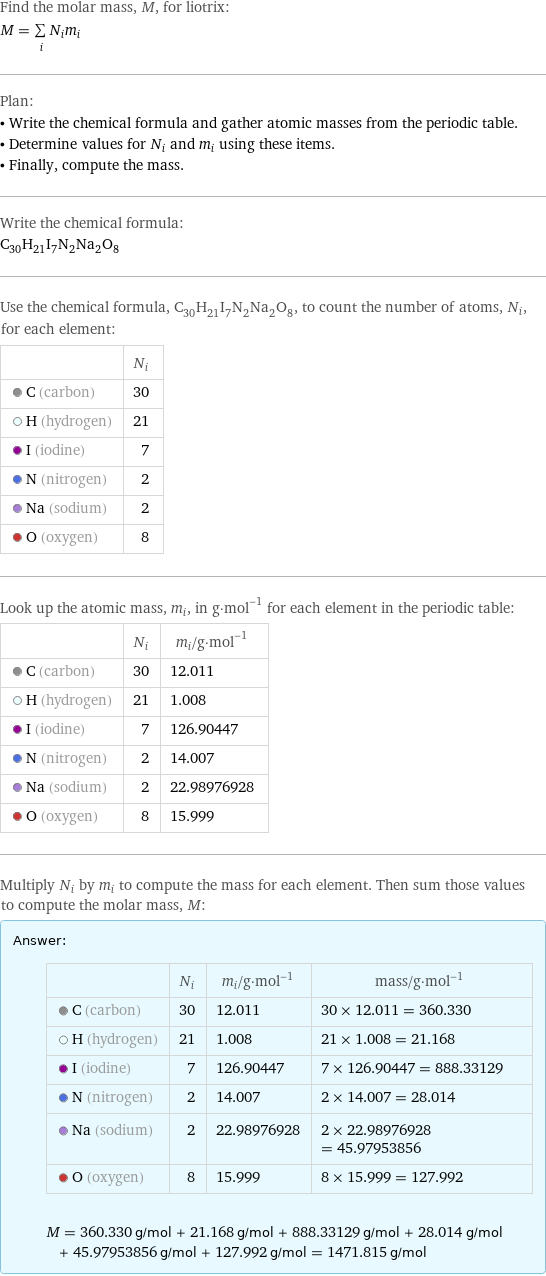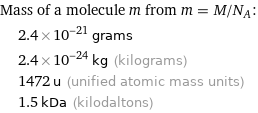Input interpretation

liotrix | molar mass
Result

Find the molar mass, M, for liotrix: M = sum _iN_im_i Plan: • Write the chemical formula and gather atomic masses from the periodic table. • Determine values for N_i and m_i using these items. • Finally, compute the mass. Write the chemical formula: C_30H_21I_7N_2Na_2O_8 Use the chemical formula, C_30H_21I_7N_2Na_2O_8, to count the number of atoms, N_i, for each element: | N_i C (carbon) | 30 H (hydrogen) | 21 I (iodine) | 7 N (nitrogen) | 2 Na (sodium) | 2 O (oxygen) | 8 Look up the atomic mass, m_i, in g·mol^(-1) for each element in the periodic table: | N_i | m_i/g·mol^(-1) C (carbon) | 30 | 12.011 H (hydrogen) | 21 | 1.008 I (iodine) | 7 | 126.90447 N (nitrogen) | 2 | 14.007 Na (sodium) | 2 | 22.98976928 O (oxygen) | 8 | 15.999 Multiply N_i by m_i to compute the mass for each element. Then sum those values to compute the molar mass, M: Answer: | | | N_i | m_i/g·mol^(-1) | mass/g·mol^(-1) C (carbon) | 30 | 12.011 | 30 × 12.011 = 360.330 H (hydrogen) | 21 | 1.008 | 21 × 1.008 = 21.168 I (iodine) | 7 | 126.90447 | 7 × 126.90447 = 888.33129 N (nitrogen) | 2 | 14.007 | 2 × 14.007 = 28.014 Na (sodium) | 2 | 22.98976928 | 2 × 22.98976928 = 45.97953856 O (oxygen) | 8 | 15.999 | 8 × 15.999 = 127.992 M = 360.330 g/mol + 21.168 g/mol + 888.33129 g/mol + 28.014 g/mol + 45.97953856 g/mol + 127.992 g/mol = 1471.815 g/mol
Unit conversion

1.4718 kg/mol (kilograms per mole)
Comparisons

≈ 2 × molar mass of fullerene ( ≈ 721 g/mol )

≈ 7.6 × molar mass of caffeine ( ≈ 194 g/mol )

≈ 25 × molar mass of sodium chloride ( ≈ 58 g/mol )
Corresponding quantities

Mass of a molecule m from m = M/N_A: | 2.4×10^-21 grams | 2.4×10^-24 kg (kilograms) | 1472 u (unified atomic mass units) | 1.5 kDa (kilodaltons)

Relative molecular mass M_r from M_r = M_u/M: | 1472